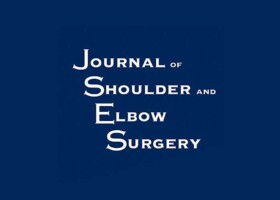
Authors:
Ulrich J A Spiegl, Sean D Smith, Jocelyn N Todd, Coen A Wijdicks, Peter J Millett
Abstract:
Fusion of the acromial apophysis across the 4 distinct ossification centers typically occurs between the ages of 15 and 18 years. Os acromiale is described as a failure of osseous union between 2 of the apophyses, most commonly between the meso-acromion and meta-acromion. The frequency ranges from 1% to 15%. Commonly, os acromiale is a nonsymptomatic condition that is identified incidentally during radiographic examination of the shoulder. However, several clinical studies have reported symptomatic cases of os acromiale, with symptoms such as pain at the site of nonunion, decreased range of motion, pain during abduction, weakness, and pain during hypermobility. In addition, rotator cuff tears and impingement have been associated with this pathologic process.
In cases of failed conservative treatment of symptomatic os acromiale, a surgical approach is recommended, including fragment excision or surgical repair consisting typically of resection of the pseudarthrosis, reduction, and internal fixation. Fragment excision can be performed arthroscopically or through an open approach, although excision of larger types can result in deltoid impairment. Poor results have frequently been reported after open excision. Pagnani reported promising results after arthroscopic fragment resection in a young and athletic population with os acromiale at the junction between meso-type and meta-type. Larger fragments need to be preserved to prevent deltoid weakness, particularly in active individuals. Internal fixation has been the method of choice, although fixation techniques vary between studies, from fixation with tension wiring to cannulated screws inserted from anterior-posterior (A-P) or posterior- anterior. The biomechanical characteristics of different internal fixation modalities have not been compared.
Therefore, the purpose of this study was to compare the strength and stiffness of different internal fixation techniques at time zero for the operative treatment of unstable and symptomatic meso-type os acromiale in a cadaveric biomechanical model. The investigated techniques were cannulated screw fixation vs. cannulated screw fixation augmented with a tension band. The tension band technique was hypothesized to provide higher repair strength compared with isolated cannulated screw fixation.
For the complete study: Biomechanical evaluation of internal fixation techniques for unstable meso-type os acromiale
